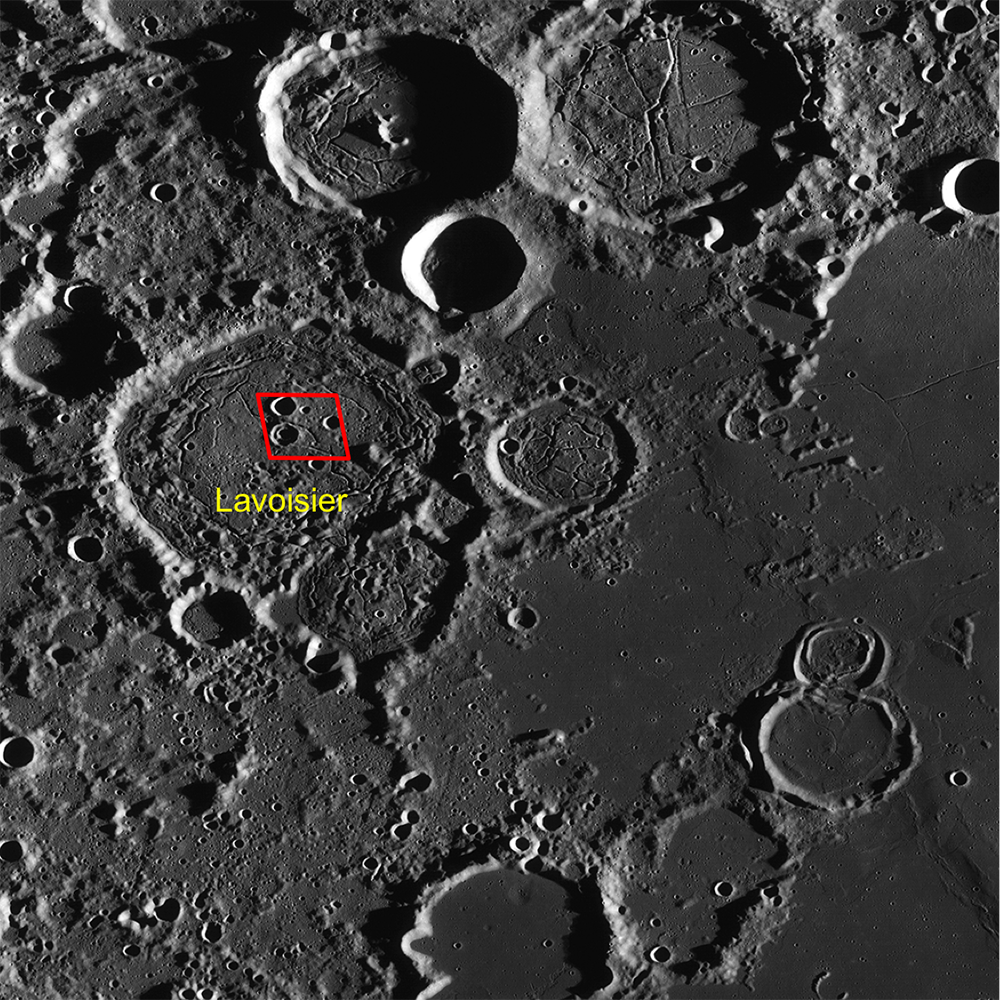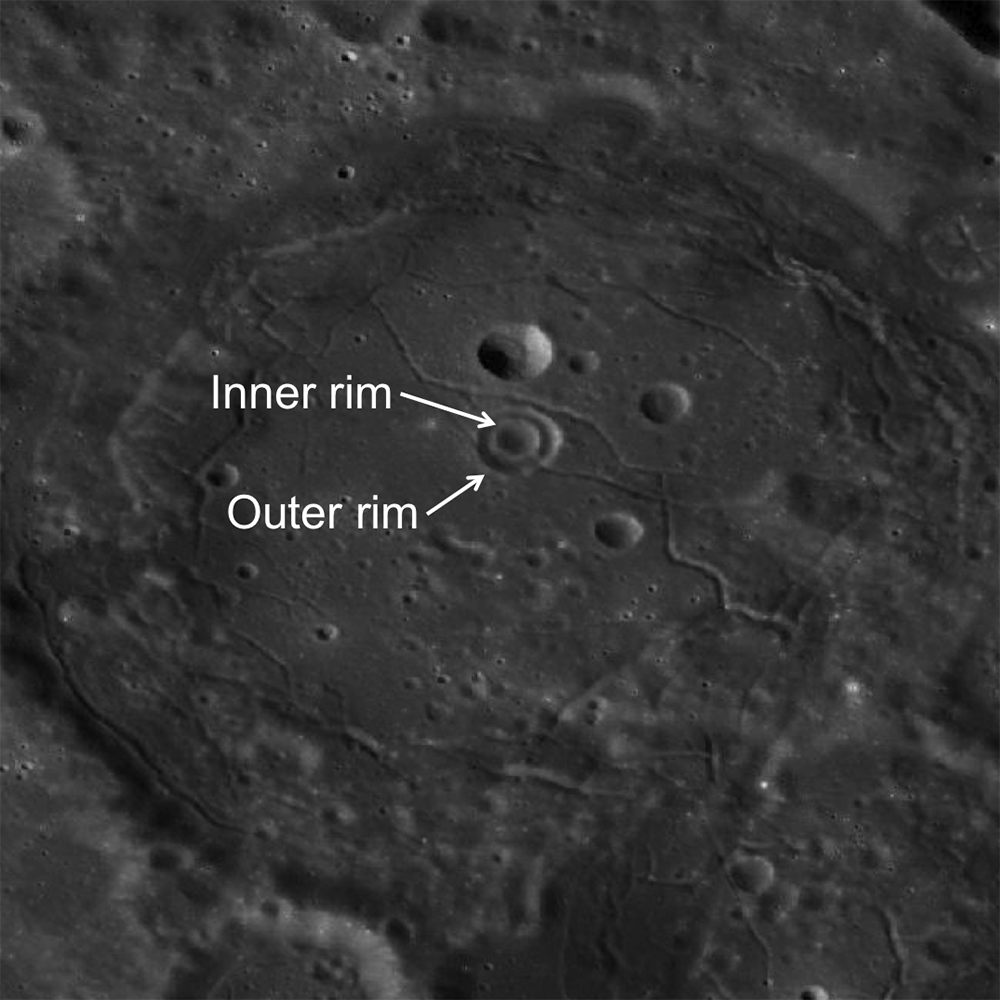
Many intricately fractured crater floors are found in the northwestern portion of Oceanus Procellarum, near the boundary between mare and highlands (check out the WAC context image below). Today we peer into one of those craters, Lavoisier crater, with a diameter of ~70 km (43.5 miles) centered at 38.17° latitude and -81.25° longitude. Most floor-fractured craters (FFCs) occur in or near ancient basins; some of the basins were flooded with mare basalt. We see three fractures in the image above: one running diagonally trending NW to SE, the second running almost parallel to the first and right through the rim of a concentric crater, and the third is seen on the lower right corner of the image perpendicular to the first fracture. These fractures not only cut across the floor center, but they are also found skirting the walls of the crater on the floor. One proposed formation mechanism is post-impact modification by volcanic related activity, such as magmatic intrusion. The other proposed mechanism is viscous relaxation.

Much like floor fractured craters, concentric craters are often found near mare/highlands boundaries. Today's Featured Image includes an example of a concentric crater. Concentric craters contain an inner rounded rim whose formation mechanism is not entirely understood, see the WAC context image below. One theory is that concentric craters are the surface expression of a subsurface discontinuity, such as a layer with different mechanical properties. However, as we look in our Featured Image adjacent to the concentric crater, we see a similarly sized (~6 km) crater that does not exhibit concentricity! If the concentric crater was formed by an impactor hitting a layered target, it would mean that the layering was extremely localized, otherwise the adjacent crater would also be concentric. Another proposed formation mechanism is uplift from magmatic intrusions.

So we don't have the whole story yet, but scientists are hard at work trying to understand these processes. Geologists are studying the morphologies and compositions of lunar features, theorists/dynamicists are computationally simulating the cratering process, and experimentalists try to replicate these craters in the laboratory with high energy events. One day, on-site investigations of the lunar subsurface will also assist in determining the origin of the myriad of features seen across the lunar landscape.
If you were to go to Lavoisier crater, which structures would you like to study? Pick them out by surveying the full resolution NAC mosaic.
Related Posts:
Oblique Image of Concentric Crater
Concentric crater
Karpinskiy Floor Fractures
Alphonsus crater mantled floor fracture
Bah Humboldt!
A Colorful History of Floor-Fractured Komarov
Published by Raquel Nuno on 4 February 2014